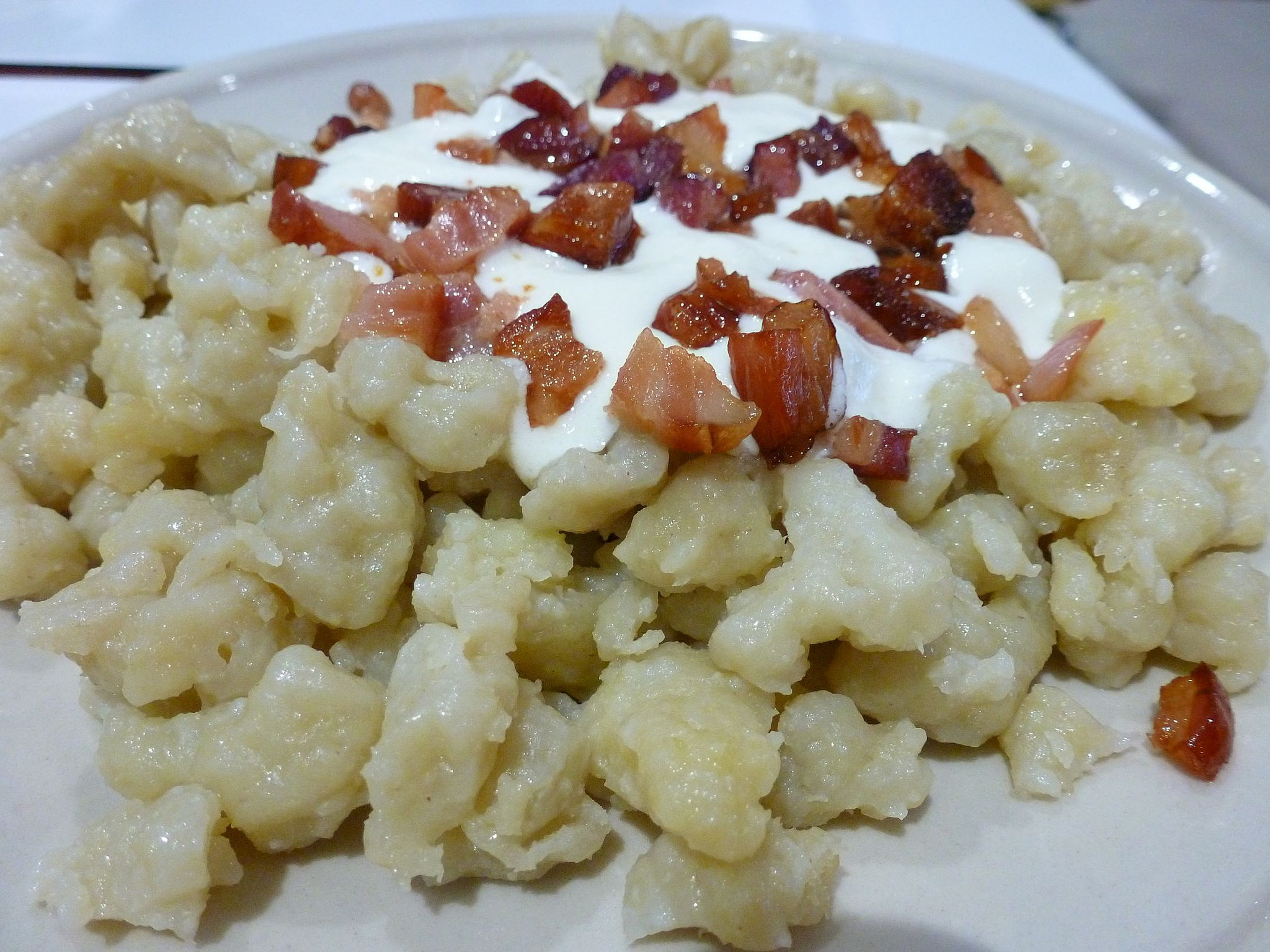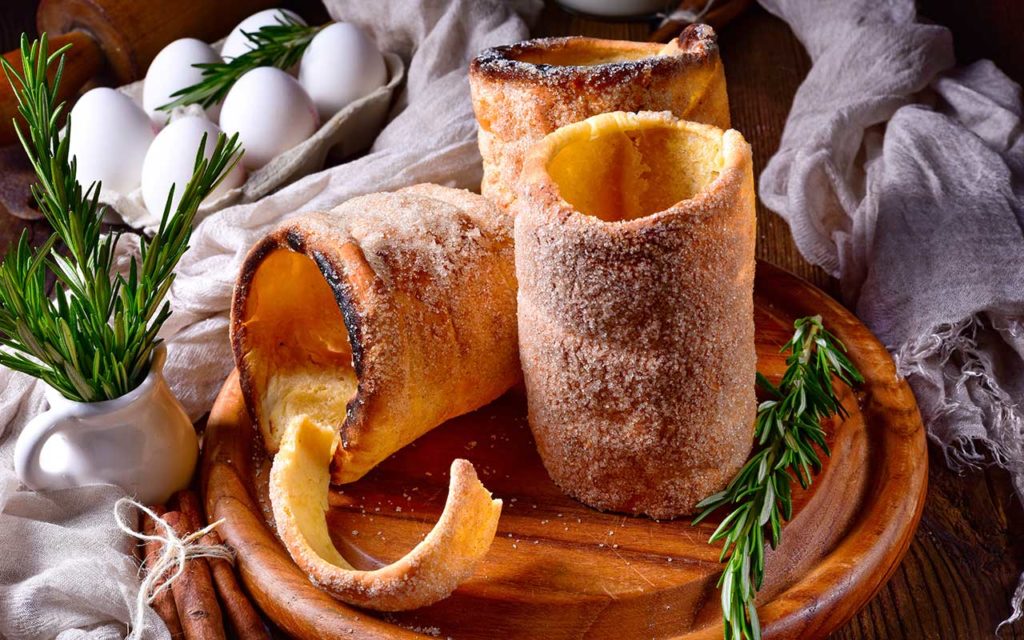Slovak foods, a symphony of flavors and a testament to the country’s rich culinary heritage, invite you on a gastronomic adventure that will tantalize your taste buds and captivate your senses.
From the hearty traditional dishes steeped in history to the modern interpretations that push culinary boundaries, Slovak cuisine offers a diverse and delectable array of culinary delights.
Traditional Slovak Dishes

Slovak cuisine is a diverse and flavorful culinary tradition that reflects the country’s rich history and cultural heritage. Traditional Slovak dishes often feature hearty ingredients such as potatoes, cabbage, pork, and cheese, and are characterized by their bold flavors and comforting aromas.
These dishes have played a significant role in Slovak culture throughout history, serving as a source of sustenance and a way to connect with the country’s past. They are often prepared during festivals and special occasions, bringing families and communities together to share in the joy of dining.
Popular Slovak Dishes
- Bryndzové Halušky:Soft potato dumplings topped with sheep’s milk cheese, often served with bacon.
- Kapustnica:A hearty soup made with sauerkraut, smoked pork, and vegetables.
- Guláš:A beef stew flavored with paprika and other spices, often served with bread or dumplings.
- Lokše:Thin potato pancakes filled with various fillings, such as poppy seed or cottage cheese.
- Pirohy:Pierogi-like dumplings filled with potato, cheese, or meat, often served with sour cream.
Unique Flavors and Ingredients
Slovak cuisine is known for its use of bold flavors and unique ingredients that create a distinct culinary experience. Paprika, garlic, and onions are commonly used to add depth and warmth to dishes, while sheep’s milk cheese, sauerkraut, and smoked meats contribute a tangy and savory element.
The use of fresh, seasonal ingredients is also a hallmark of Slovak cooking. Many dishes are prepared with locally grown vegetables, fruits, and herbs, ensuring a vibrant and authentic taste.
Regional Variations in Slovak Cuisine: Slovak Foods

Slovak cuisine is a diverse tapestry of flavors and traditions that varies from region to region. The country’s unique geography and cultural influences have shaped distinct culinary identities in each area.
Western Slovakia
Western Slovakia, bordering Austria and Hungary, showcases a blend of influences from both countries. Hearty dishes like bryndzové halušky(potato dumplings with sheep cheese) and kapustnica(sauerkraut soup) are popular. Paprika and caraway seeds add a touch of spice to many dishes.
Central Slovakia
Central Slovakia, known for its mountainous terrain, features a cuisine influenced by its pastoral heritage. Smoked meats, such as údené koleno(smoked pork knuckle), are a staple. Potato pancakes called zemiakové plackyand dumplings known as pirohare also common.
Eastern Slovakia
Eastern Slovakia, bordering Ukraine and Poland, has a cuisine marked by Slavic and Rusyn influences. Piroshky(stuffed dumplings) are a popular dish, often filled with potato, cheese, or meat. Soups like boršč(beetroot soup) and škvarková polievka(soup with fried pork cracklings) are also common.
Southern Slovakia
Southern Slovakia, bordering Hungary, exhibits strong Hungarian influences. Dishes like guláš(goulash) and lángos(fried flatbread) are popular. Paprika and chili peppers add a vibrant flavor to many dishes.
Slovak Food Festivals and Events

Slovakia’s vibrant culinary scene is celebrated through a variety of food festivals and events that showcase the country’s rich gastronomic heritage. These events provide a platform to promote traditional Slovak cuisine, support local food producers, and foster a sense of community.
Food festivals in Slovakia often feature a diverse range of traditional dishes, from hearty soups and stews to sweet pastries and desserts. Attendees can sample local specialties, engage with food vendors, and learn about the culinary traditions of different regions.
In addition to food, these events typically offer entertainment such as live music, dance performances, and cooking demonstrations.
Major Food Festivals and Events in Slovakia
- Slovak Food Festival(Bratislava): Held annually in the capital city, this festival showcases a wide variety of Slovak cuisine, including traditional dishes, street food, and innovative creations from top chefs.
- Gastrofest(Košice): This popular food festival in eastern Slovakia features a mix of local and international cuisine, with a focus on regional specialties and gourmet dishes.
- Liptov Food Festival(Liptovský Mikuláš): This festival in the Liptov region celebrates the traditional cuisine of the area, with a particular focus on bryndzové halušky (potato dumplings with sheep cheese).
- Trenčín Grape Festival(Trenčín): This music and food festival combines live music with a wide range of culinary offerings, including street food, craft beer, and local delicacies.
- Foodstock(Piešťany): This food festival in western Slovakia features a mix of Slovak and international cuisine, with a focus on healthy and sustainable food options.
These food festivals and events play a significant role in promoting Slovak cuisine and fostering a sense of national pride. They provide a platform for local food producers to showcase their products, attract tourists, and educate the public about the country’s rich culinary heritage.
Modern Interpretations of Slovak Cuisine
Contemporary Slovak chefs are reimagining traditional dishes, blending traditional flavors with modern cooking techniques and innovative ingredients.
They are experimenting with sous vide, molecular gastronomy, and fusion cuisine, creating dishes that are both familiar and surprising.
Examples of Modern Slovak Restaurants and Their Signature Dishes
- Bistro.skin Bratislava serves a modern take on bryndzové halušky, with the potato dumplings made with smoked bryndza cheese and topped with crispy bacon.
- Koliba Kamzíkin the High Tatras offers a contemporary version of pirohy, filled with wild mushrooms and served with a truffle sauce.
- Med Malinain Trenčín specializes in Slovak-inspired desserts, such as a chocolate lava cake with a plum filling.
Slovak Food and Health
Slovak cuisine offers a rich blend of flavors and textures, but it also boasts an array of nutritional benefits. Traditional Slovak dishes are typically made with fresh, whole ingredients, providing a balanced intake of essential nutrients.
Nutritional Value
- Carbohydrates:Slovak cuisine is rich in complex carbohydrates from sources such as potatoes, dumplings, and bread. These provide sustained energy throughout the day.
- Protein:Meat, poultry, and dairy products are common ingredients in Slovak dishes, providing ample protein for muscle growth and repair.
- Fat:Traditional Slovak dishes often include healthy fats from sources such as butter, lard, and sunflower oil. These fats support hormone production and provide energy.
- Fiber:Cabbage, sauerkraut, and whole-grain breads are excellent sources of dietary fiber, which aids digestion and promotes satiety.
- Vitamins and Minerals:Slovak dishes are rich in vitamins and minerals, including vitamin C from sauerkraut, potassium from potatoes, and calcium from dairy products.
Health Benefits
Consuming Slovak cuisine can provide several health benefits, including:
- Improved Digestion:The high fiber content in Slovak dishes promotes regular bowel movements and a healthy digestive system.
- Reduced Risk of Chronic Diseases:The antioxidants and anti-inflammatory compounds found in Slovak foods, such as sauerkraut and cabbage, may help reduce the risk of chronic diseases like heart disease and cancer.
- Stronger Bones:The calcium-rich dairy products commonly used in Slovak dishes support bone health and prevent osteoporosis.
- Boosted Immunity:The vitamin C content in sauerkraut and other Slovak dishes helps strengthen the immune system and protect against infections.
Incorporating Slovak Dishes into a Healthy Diet, Slovak foods
To incorporate Slovak dishes into a healthy diet, consider the following tips:
- Choose Whole Grains:Opt for whole-grain breads, dumplings, and pasta over refined counterparts.
- Limit Meat Consumption:While meat is a staple in Slovak cuisine, moderate consumption is key for overall health.
- Incorporate Plenty of Vegetables:Cabbage, sauerkraut, and other vegetables are essential components of a balanced Slovak meal.
- Use Healthy Fats:Choose healthy fats such as olive oil or avocado oil over butter or lard.
- Control Portion Sizes:Slovak dishes can be calorie-dense, so pay attention to portion sizes to avoid overeating.
By following these recommendations, you can enjoy the delicious flavors of Slovak cuisine while reaping its health benefits.
FAQ Compilation
What are some popular traditional Slovak dishes?
Bryndzové halušky (potato dumplings with sheep cheese), kapustnica (sauerkraut soup), and pirohy (dumplings filled with various ingredients) are among the most beloved traditional Slovak dishes.
How does Slovak cuisine differ across different regions?
Slovak cuisine exhibits regional variations, with each region boasting its unique culinary traditions and specialties. For instance, the northern regions are known for their hearty dishes like halušky, while the southern regions showcase influences from Hungarian cuisine.
What are some modern interpretations of Slovak cuisine?
Contemporary Slovak chefs are reimagining traditional dishes with modern techniques and innovative ingredients. Examples include deconstructed halušky served with truffle oil or beetroot risotto with bryndza cheese.
